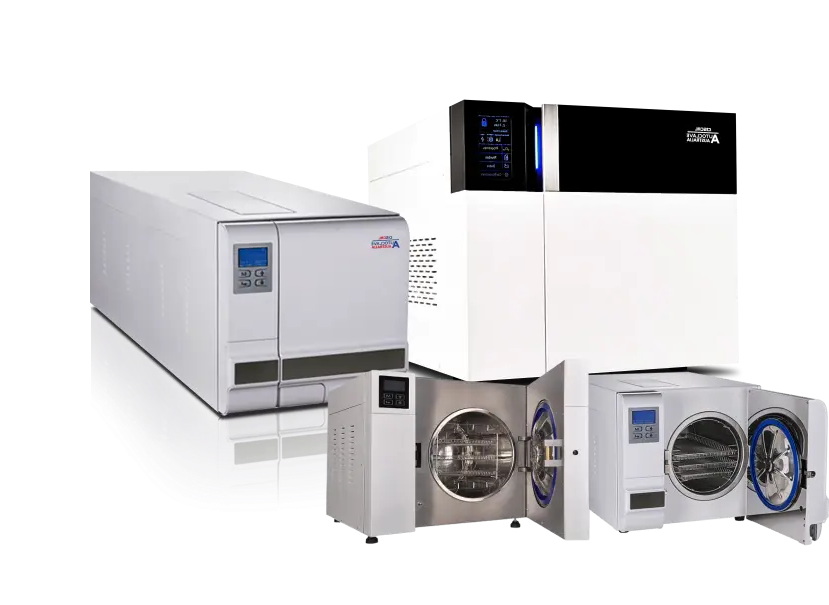
Autoclave Repair & Maintenance
Fast, Secure, and Reliable Repair and Maintenance for your autoclave machines.
Keep Your Autoclave Running Smoothly with our Repair and Maintenance Services
Get the most out of your autoclave machines with Autoclave Australia's Repair and Maintenance Service. We offer affordable on-site repair and maintenance for your autoclave machines done by our expert and certified technicians nationwide. Our state-of-art laboratories are located in New South Wales, Victoria, and Queensland.
Autoclave Australia specializes in expert autoclave repair and maintenance solutions tailored to meet your needs. With years of experience and a commitment to excellence, our team of skilled technicians ensures that your autoclave operates at peak performance, minimizing downtime and maximizing efficiency. Whether it's routine maintenance or emergency repairs, you can trust us to deliver reliable and prompt service with a smile.
AUTOCLAVES WE CALIBRATE
We cater to all kinds and all brands of autoclaves nationwide and we also offer on-site calibration for your convenience. The autoclave types that we calibrate includes but are not limited to:
AUTOCLAVE REPAIR AND MAINTENANCE
We repair and service all autoclave parts in all autoclave brands. Our technicians are well trained to identify faulty autoclave components and have experience in addressing and repairing the autoclave parts as well. Whatever the issue, trust that Autoclave Australia is capable and certified to repair and maintain your valuable autoclave machines ensuring your autoclave machine’s longevity enabling you to get the most out of your autoclaves.
An autoclave has various components that have their own functions. Here are some of the components of an autoclave we service and their functions:
- Chamber: The chamber is where the sterilization process takes place, consisting of an inner chamber and an outer jacket filled with steam to accelerate sterilization cycles and reduce condensation.
- Control System: The autoclave's control systems are sophisticated and can range from push-button to complex touchscreen systems. Regardless of form, they play a crucial role in controlling the sterilization process by following preset and encoded "steps" to regulate valves and other components for different sterilization phases.
- Thermostatic Trap: Responsible for managing chamber condensation, the thermostatic trap monitors and controls the exit of air and water from the chamber. Operating according to preset parameters, these traps automatically close when reaching specific temperatures.
- Safety Valve: Given the high-pressure operation of autoclaves, safety valves act as fail-safe devices in case of electronic control or pressure vessel procedure failures. Regular testing and maintenance are crucial for ensuring their reliability.
- Cooling System: Autoclave cooling systems utilize wastewater cooling to prevent heat damage to drainage systems before wastewater is discharged.
- Vacuum System: Vacuum systems remove air from the chamber, typically in pre-vacuum and post-vacuum phases, to replace it with steam. Not all autoclaves feature vacuum systems.
- Steam Generator: Also known as boilers, steam generators produce steam when the autoclave lacks a central steam source or when the existing steam source is insufficient. Like vacuum systems, steam generators are only found in certain types of autoclaves.
Below are the lists (not limited to) of other autoclave parts that we maintain, replace, or repair:
- Gaskets
- Coils & Heater Elements
- Switches and timers
- Power Circuit Boards
- Covers & Panels
- Filters
- Valves & Solenoids
- Wires, Sensors & Connectors
- Door Components
- Drain Tubes & Waste Bottles
Frequently Asked Questions
How to fix autoclave?
Faulty Autoclaves can pose a high risk of injury, accidents and worst, cross-contamination because your autoclave machine is not working properly compared to the standards. Repairing them yourself might not be of great help and can even cause unexpected results. It is recommended to report faulty autoclaves or seek someone who is certified to repair and troubleshoot an autoclave device to ensure safety.
However, here are troubleshooting steps to follow if your autoclave is experiencing issues:
- Verify the door: Ensure the door is open and the autoclave is properly leveled.
- Monitor pressure: Open the door to confirm water fills the chamber to the recommended level. If water fails to enter or does so slowly, inspect the water's path to the chamber.
- Check the outlet: Reset any tripped relays.
- Examine chamber drain: Clear any blockages hindering steam from reaching the correct pressure and temperature.
- Inspect the steam generator: Repair any malfunctions to enable the autoclave to reach the sterilizing temperature.
- Assess components: Replace or repair faulty parts to prevent overheating and ensure safety.
- Verify the fuse: Investigate any issues preventing the autoclave from powering on, such as missing or blown fuses.
- Examine the gasket: Investigate any issues preventing the autoclave from powering on, such as missing or blown fuses.
At Autoclave Australia, we offer fast and reliable autoclave repair and maintenance service. We make sure that your business will experience the less amount of downtimes.
What to do if autoclave fails?
There can a lot of reasons why your autoclave fails. However, the best possible action is to seek help with professionals to troubleshoot and identify the underlying issue.
It is important that issues with your autoclave machines are being checked with the certified technician as they are knowledgeable to test and to identify faults with the autoclave machines.
Autoclave machines are being used or sterilizing and killing bio-hazardous materials and organisms hence it is important that the proper settings are being set and validated by certified personnel after each troubleshooting or repairs.